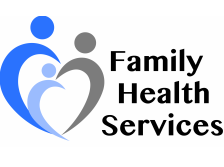Diabetes News – July 2019
July is National Picnic Month
Picnics hearken back to mid-18th-century al fresco French dining. July is an excellent time for National Picnic Month. The fresh air stirs the appetite, and garden vegetables and fruits make outdoor eating easier. Remember to keep the meals simple and focus on the company. Sandwiches, finger foods, and beverages may seem plain, but it’s more about spending time with each other and being in nature.
Healthy food options and activity are important parts of managing your diabetes. Making your picnic “diabetic friendly” is not as hard as you might think. Use these tips to make it easy.
• Choose wholegrain varieties of starchy carbs such as couscous or pasta in salads, potato salads with the skins left on, and wholegrain bread for sandwiches.
• For cold meats, try leaner options such as chicken or turkey breast rather than salami or ham.
• Add crunch to sandwiches with extra veggies such as pepper, carrot, cucumber and lettuce.
• Use beans in a salad to up the protein content and to make it more filling.
• Swap sugary and fatty treats such as cake and cookies for healthier alternatives – mixed nuts, fruit, unsalted rice cakes and low-fat fruit yogurts make great replacements.
• Sip on water, no-added sugar fruit drinks or diet drinks to stay hydrated.
• Make your own dips, dressings and marinades from scratch at home to avoid the high fat, sugar and salt content from store-bought varieties.
• From playing games to going for a walk, combine your picnic with some physical activity to maximize the health benefits.
Try adding this tasty recipe to your picnic basket.
Pulled Chicken & Pickled Veggie Wraps
Ingredients
2 cups julienned or coarsely shredded carrots
1 cup julienned radishes
1 cup thinly sliced red onion
½ cup rice vinegar
2 tablespoons sugar
1 teaspoon salt
½ cup light mayonnaise
1 teaspoon siracha, plus more for serving
8 7- to 8-inch low-carb whole-wheat tortillas, such as La Tortilla Factory
8 Bibb and/or red-leaf lettuce leaves
2⅔ cups shredded cooked chicken breast
Directions
• Combine carrots, radishes, onion, vinegar, sugar and salt in a sealable plastic bag. Turn to coat. Set the bag in a shallow dish and marinate in the refrigerator for 1 hour.
• Stir mayonnaise and siracha in a small bowl. Drain the pickled vegetables (discard marinade).
• Spread 1 Tbsp. of the mayonnaise mixture on each tortilla. Top with lettuce, chicken and pickled vegetables and roll up. Wrap and refrigerate for up to 24 hours. Serve drizzled with more siracha, if desired.
COMMUNITY OFFERINGS:
HEALTH & WELLNESS SCREENING – offered by Firelands Regional Medical Center
You must Pre-register for all Lab Work at 419-557-7840.
Vermilion Health & Wellness Screening
Dr. Rogers Office
1605 State Route 60
Vermilion, OH
Thursday, July 11
7:30 AM – 9:30 AM
Port Clinton Health &Wellness Screening
Drs. Braniecki and Widmer
3960 East Harbor Road
Port Clinton, OH
Saturday, August 17
7:30 AM – 9:30 AM
Health & Wellness Screenings include:
• Complete Blood Count with Metabolic & Lipid Panel (No Eating or Drinking for 12 Hours – Water Allowed – includes liver and kidney function studies, fasting blood sugar, thyroid, cholesterol, HDL/LDL and triglyceride levels along with a complete blood count.) – $45;
• Hemoglobin A1C (A three month report card on how well your blood sugars have been running. A test used to diagnose diabetes and/or to evaluate how well your treatment plan is working.) – $25;
• PSA (Prostate Specific Antigen)- $30;
• Vitamin D – $35;
• TSH – $25
Diet and exercise are an essential part of diabetes management. So is routine testing.
The A1C test—also known as the hemoglobin A1C or HbA1c test—is a simple blood test that measures your average blood sugar levels over the past 3 months. It’s one of the commonly used tests to diagnose prediabetes and diabetes, and is also the main test to help you and your health care team manage your diabetes. Higher A1C levels are linked to diabetes complications, so reaching and maintaining your individual A1C goal is really important if you have diabetes.
Last quarter, 68% of our diabetic patients had an A1C of less than 9%. Talk with your provider to discuss the right options for you, including programs such as DEEP.
Diabetes Empowerment Education Program – DEEP
WHEN:
July 10, 2019 – August 14, 2019
1:00 pm – 3:00 pm
WHERE:
Kelleys Island School
528 Division Street, Kelleys Island
COST:
Free
CONTACT:
Serving Our Seniors /Tina Elmlinger
419-624-1856
The presenter is Tina Elmlinger, Healthcare Advocate Trainer. Classes are held once a week for six weeks for Erie County residents who are aged 60 or older and are pre-diabetic or diabetic. A spouse or caregiver may also attend. Advanced registration is required, 419-624-1856. Please call and leave your name, phone number and the name of the program you wish to attend. If the class is cancelled, you will be notified.
For additional date and locations contact Serving Our Seniors at 419-624-1856.

